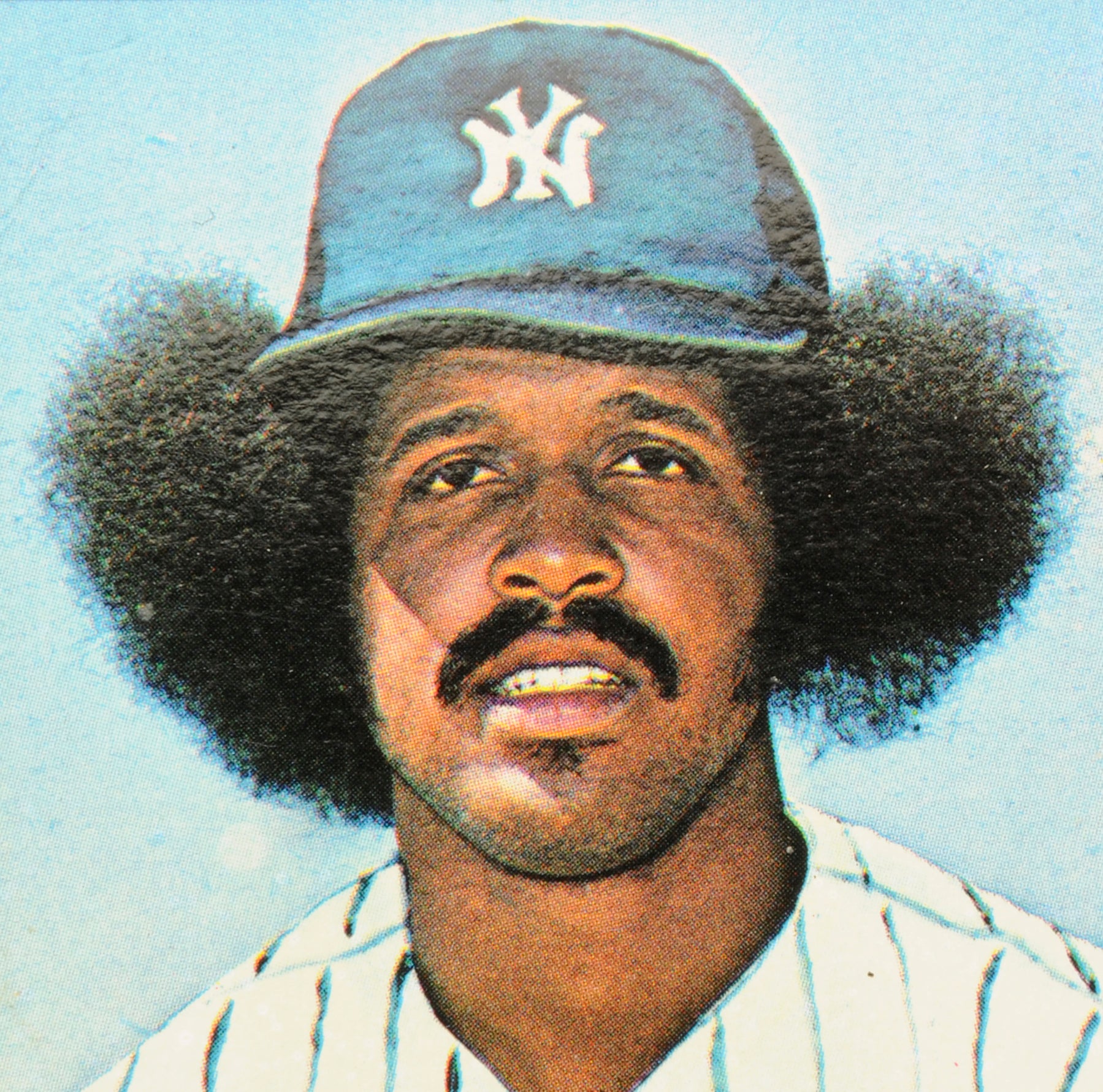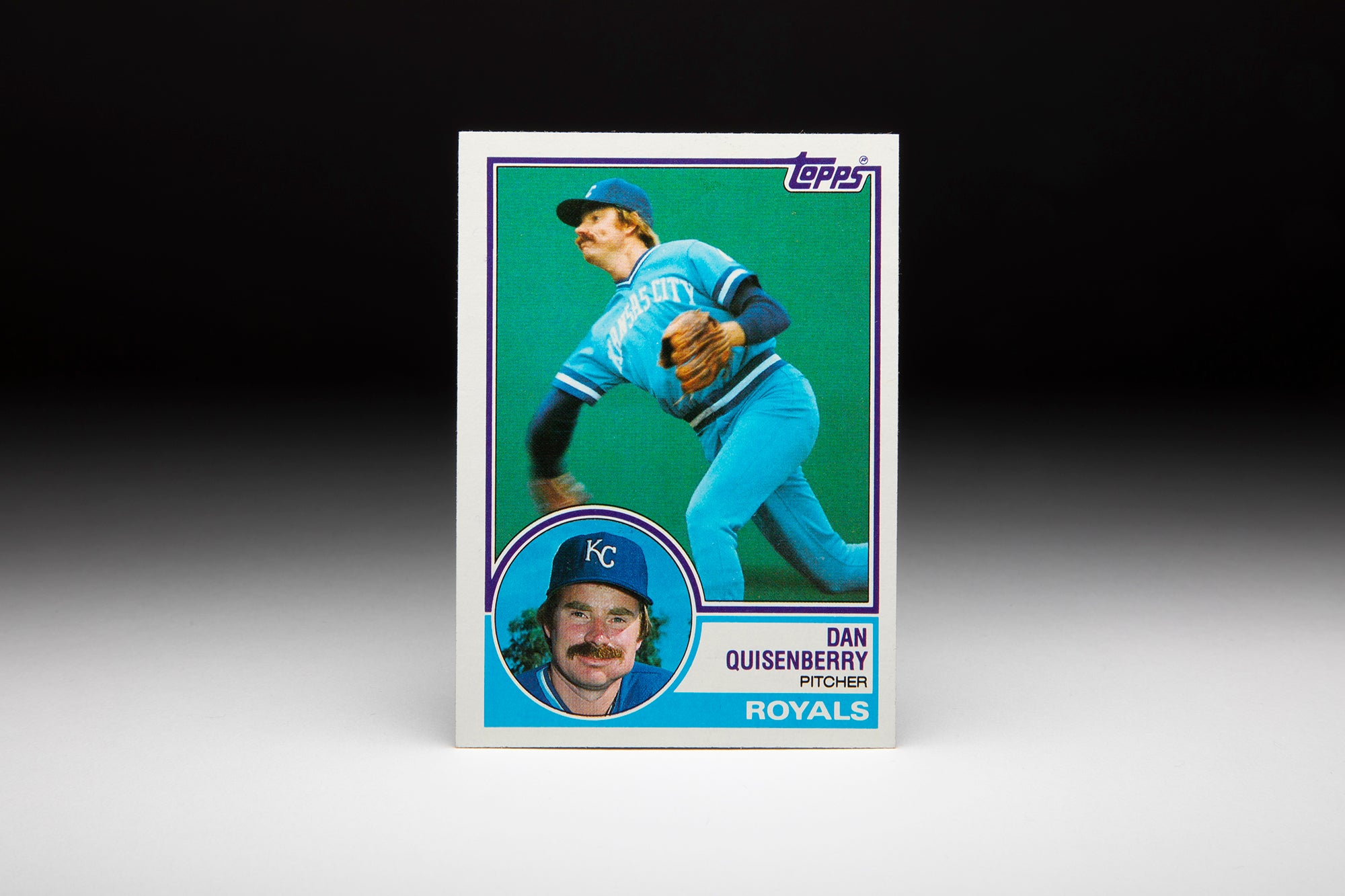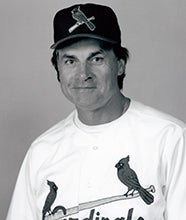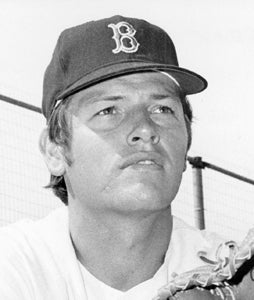- Home
- Our Stories
- #CardCorner: 1987 Topps LaMarr Hoyt
#CardCorner: 1987 Topps LaMarr Hoyt
He sat alone atop the American League leaderboard in victories for back-to-back seasons in 1982 and 1983, something only one other pitcher had done since World War II and no one has accomplished since.
It marked the pinnacle of LaMarr Hoyt’s career – one that was finished just three seasons after his Cy Young Award-winning campaign of 1983 after drug arrests left him without a job. But for almost five seasons, few pitchers in baseball were as effective – or efficient – as the burly right-hander from Columbia, S.C.
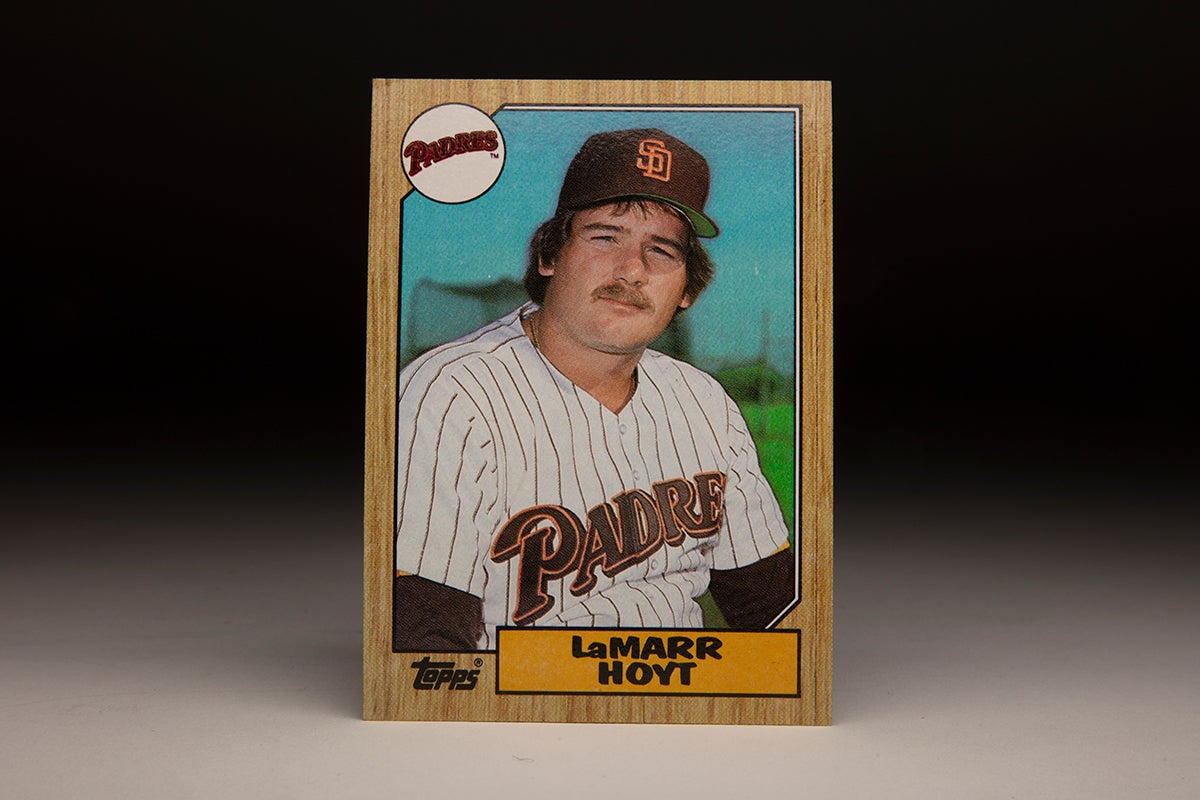
Dewey LaMarr Hoyt Jr. was born on Jan. 1, 1955. He came from a broken home, living with an aunt and uncle for much of his childhood. Growing up in Columbia, Hoyt excelled in both baseball and football – and by his own count once hit 34 home runs in a 20-game Little League season.
“He was always a fine boy, a good kid,” Bill Simpson, Hoyt’s Little League coach, told the Columbia (S.C.) Record in 1983 after Hoyt was named the AL Cy Young Award winner. “Anything you wanted him to do, he’d try to do it. He was kinda like you’d like your kid to be.”
Nearly filled into his adult 6-foot-3, 200-pound-plus frame at Keenan High School, Hoyt exhibited the remarkable control that eventually took him to the big leagues.
“About the only coaching you do with a player like that is to make sure he knows what time the game is and what time practice starts,” said Simpson, who was Keenan High School’s head football coach when Hoyt was quarterback and punter. “He’ll do the rest.”
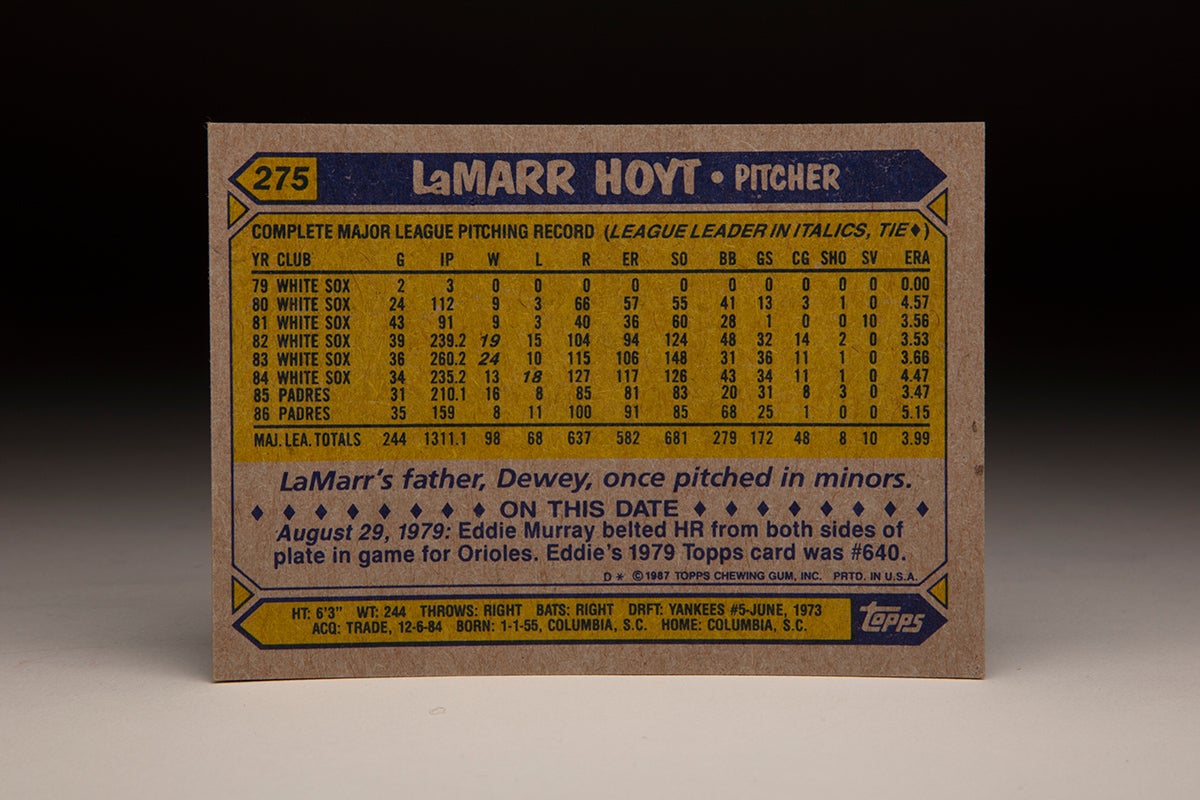
Selected by the Yankees in the fifth round of the 1973 MLB Draft, Hoyt signed quickly and reported to Johnson City of the Appalachian League. He went 6-6 with a 3.91 ERA over 76 innings that summer before establishing himself as a top prospect by going 13-4 with a 2.40 ERA in 23 starts for Class A Fort Lauderdale of the Florida State League in 1974.
Hoyt pitched in only 15 games in 1975 after suffering through a bout with infectious hepatitis early in the year but still earned a promotion to Double-A West Haven. Then in 1976, Hoyt went 15-8 with a 2.50 ERA for West Haven, throwing four shutouts and completing 14 of his 25 starts.
Now on the radar of every major league team, Hoyt was a major piece of an April 5, 1977, trade that also brought the White Sox Oscar Gamble, minor leaguer Bob Polinsky and $200,000 in exchange for Bucky Dent.
“I’m familiar with Hoyt,” White Sox manager Bob Lemon, who was the Yankees pitching coach in 1976, told the Chicago Tribune after the trade. “He has a good career ahead. He comes to us with good credentials.”
But it would take almost three more years for Hoyt to find his way to the big leagues – by which time Lemon had returned to the Yankees as manager, led the team to the 1978 World Series and then been relieved of his duties in favor of the man he replaced: Billy Martin.
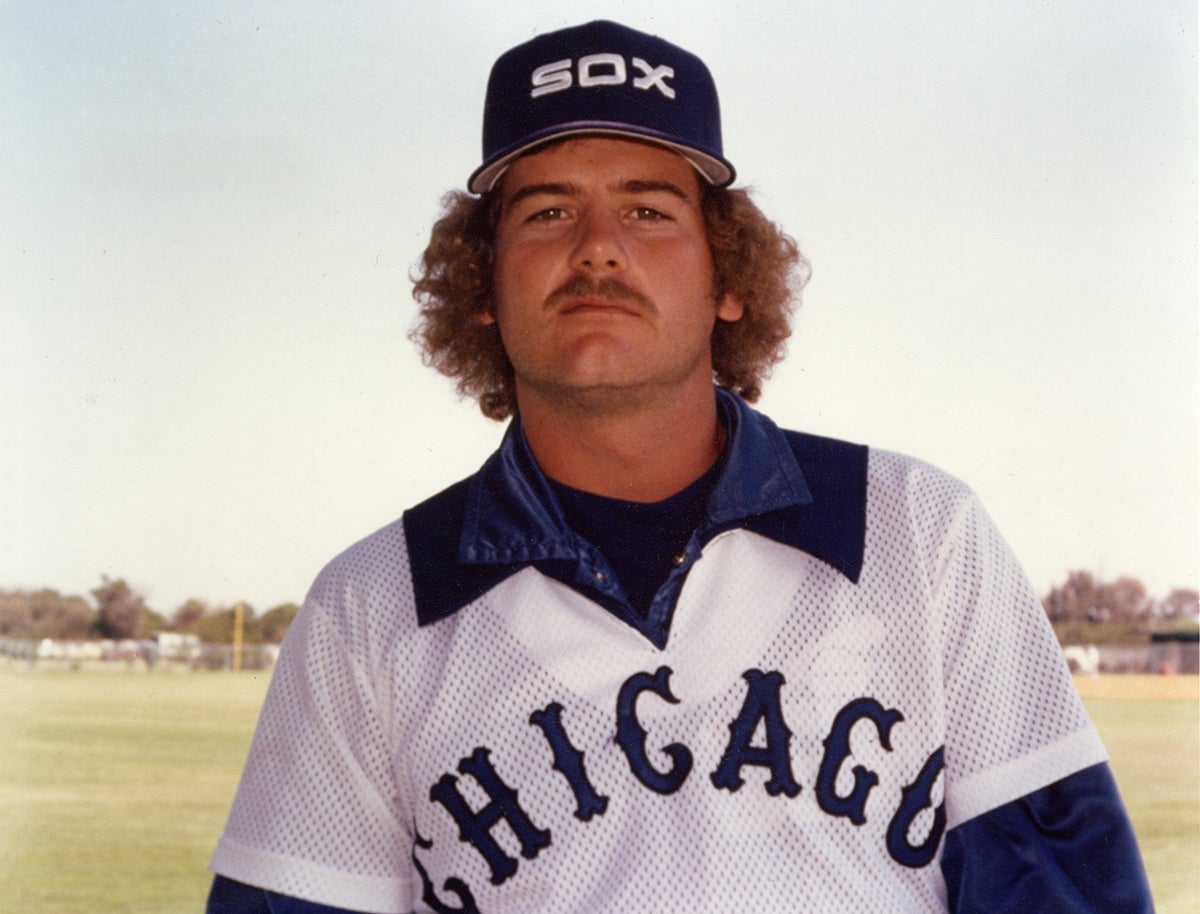
Hoyt was discouraged by the trade at first, having pitched for the defending AL champion Yankees in Spring Training and now finding himself with a franchise whose big league team was rebuilding. Hoyt struggled in 1977 at both Double-A Knoxville and Triple-A Iowa, posting a 5-15 combined record and 4.70 ERA. He clashed with Iowa manager Joe Sparks and began to question his future in the game.
In 1978, Hoyt found himself back in Class A ball with Appleton of the Midwest League – and despondently quit the team for two weeks upon the demotion. But he soon reconsidered and reclaimed his form with an 18-4 record and 2.90 ERA. He began the 1979 season with Triple-A Iowa but was demoted to Double-A Knoxville after a rough stretch – with Iowa manager Tony La Russa, who managed him during winter ball in the Dominican Republic after the 1978 campaign – advising him that the quickest way to the majors for him would be as a reliever.
“Tony rescued me,” Hoyt told the Los Angeles Times.
In Knoxville, Hoyt found success in the bullpen with a 9-5 record and 2.96 ERA in 37 games.
“I’m not the least bit satisfied with my present situation,” Hoyt told The State of Columbia, S.C., in Spring Training of 1979. “I don’t think the White Sox have given me a good look this season at all. When I came here a couple years ago, I thought I would be given a shot with the White Sox right off the bat because of my record with the Yankees. New York led me to believe I was on the verge of making their roster (in 1977).”
Finally, in September of 1979, Hoyt’s patience was rewarded when he was brought up to Chicago. He appeared in two games out of the bullpen in September and was invited to Spring Training in Sarasota, Fla., in 1980. After beginning the season in Iowa, Hoyt was summoned to Chicago in June.
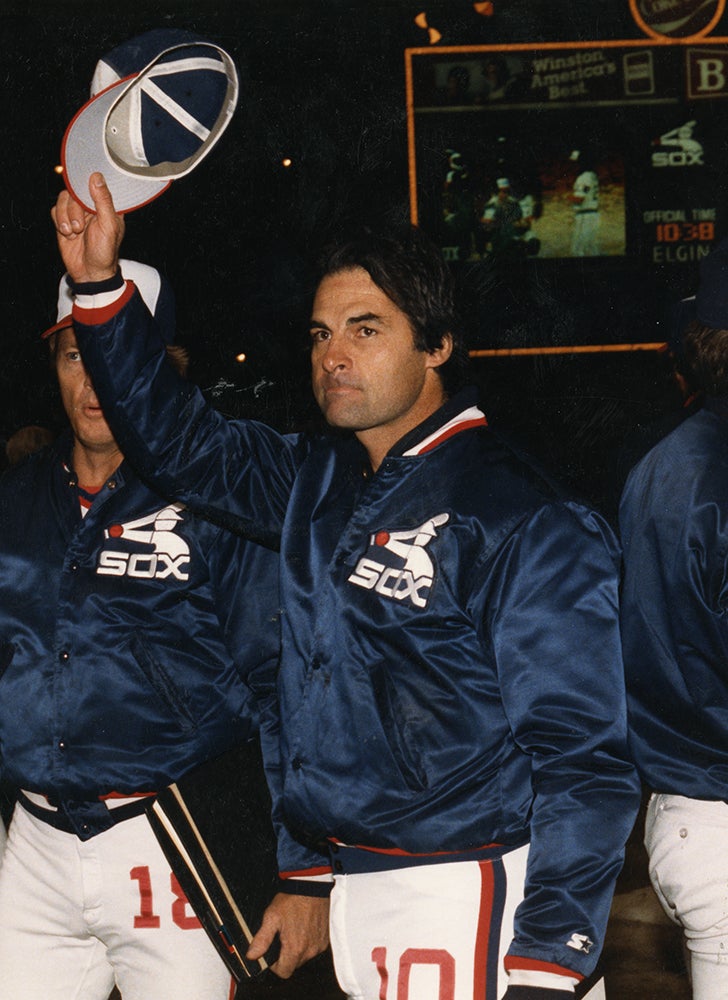
“We brought him up because of his versatility,” La Russa, then managing the White Sox, told the Toronto Star after Hoyt pitched a two-hitter for his first career shutout on Sept. 5 against the Blue Jays. “He can start and he can relieve.”
Unsurprisingly, Hoyt remained in the rotation for the rest of the season following his shutout and finished with a 9-3 record and 4.57 ERA in 24 games, including 13 starts. But the White Sox moved him to the bullpen in 1981 and Hoyt – after honing his craft in winter ball – came out of the gate strong, earning three wins and two saves in Chicago’s first 12 games.
But Hoyt longed to return to the rotation.
“I want to be a starter,” Hoyt told the Chicago Tribune early in the 1981 campaign. “You can take care of your arm a lot better. As a reliever, you tend to wear it out.”
Hoyt finished the season with a 9-3 record, 10 saves and a 3.57 ERA in 43 games – all but one in relief. He also found the control that would become his trademark, walking just 28 batters over 90.2 innings while striking out 60.
Hoyt staged a holdout during the spring of 1982, winning a clause in his contract that would pay him a bonus if he won the Cy Young Award. He started the 1982 season with nine straight wins, moving into the starting rotation in late April. Combined with five straight victories to end the 1981 campaign, Hoyt came within three wins short of the AL record while breaking Jim Kaat’s White Sox record of 12 straight wins set in 1974-75.
“He approaches the game with a level head,” White Sox catcher Carlton Fisk said of Hoyt after Cleveland snapped his winning streak with a 5-2 win over Chicago on May 29. “And he gives you what he’s got.”
With a four-pitch mix that included a sinker, slider, curve and changeup, Hoyt pitched to contact and benefited from plenty of run support as the White Sox averaged 9.6 runs per game in Hoyt’s 19 wins that year. He finished 19-15 with a 3.53 ERA over 239.2 innings, leading the AL in wins.
He failed, however, to receive a single Cy Young Award vote.
“I was doing a lot of little things that help you win,” Hoyt told the Fort Lauderdale (Fla.) News of his 1982 nine-game winning streak, “like understanding sequences of pitches being called and taking advantage of little habits.
“I always thought I had a lot of good ideas and that my approach to the game was sound. What I was happiest about (in 1982) was to find out my ideas were right all along.”
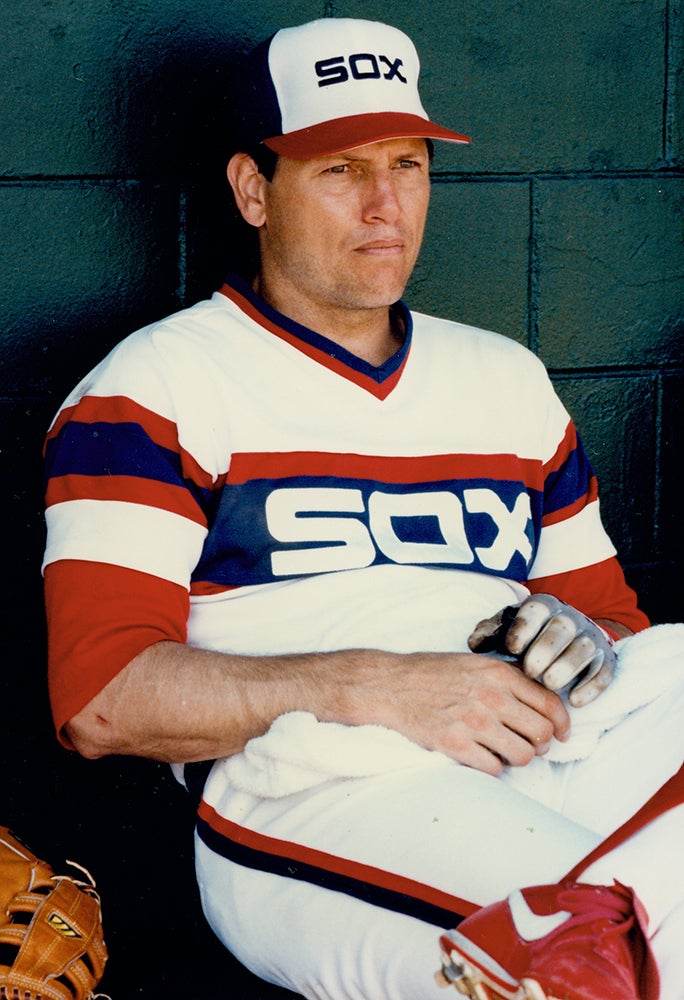
In 1983, Hoyt totaled very similar numbers to the season before but had the benefit of pitching for a White Sox team that steamrolled to the AL West title. Unlike his previous seasons, however, Hoyt started slowly and was working on a 2-6 record through May 17. But he rebounded with four complete games in his next seven starts as the White Sox worked to dig out of a 16-24 hole the start the season.
Starting on July 27, Hoyt won his last 13 decisions (over 14 starts) as Chicago finished the year on a blistering 49-16 tear.
“You just have to keep a good mental approach to the game,” Hoyt told the Fort Lauderdale News in the spring of 1983. “If you’re not mentally right, all the talent is not going to do it for you.”
Hoyt started Game 1 of the ALCS vs. Baltimore and pitched a complete-game gem, allowing just five hits, no walks and one run in a 2-1 win.
“He was tough, tough as always,” Baltimore shortstop and eventual AL MVP Cal Ripken Jr. told the Tampa Tribune after Game 1. “I don’t know if he was any tougher today than normal, although I guess so because it was such a big game.”
It would be the only postseason appearance of Hoyt’s career, as the White Sox fell to the Orioles in four games.
“We feel like LaMarr Hoyt is the best pitcher in baseball,” White Sox teammate Tom Paciorek told the Tampa Tribune. “There’s no doubt that he will win the Cy Young Award.”
Paciorek proved to be right as Hoyt received 17 of 28 first-place votes to easily outdistance runner-up Dan Quisenberry of the Royals.
“It’s a hard feeling to describe; it’s the ultimate compliment for what I do,” Hoyt told the Record after being named the Cy Young Award winner. “I’m a pitcher, and they voted me the best pitcher in the league.”
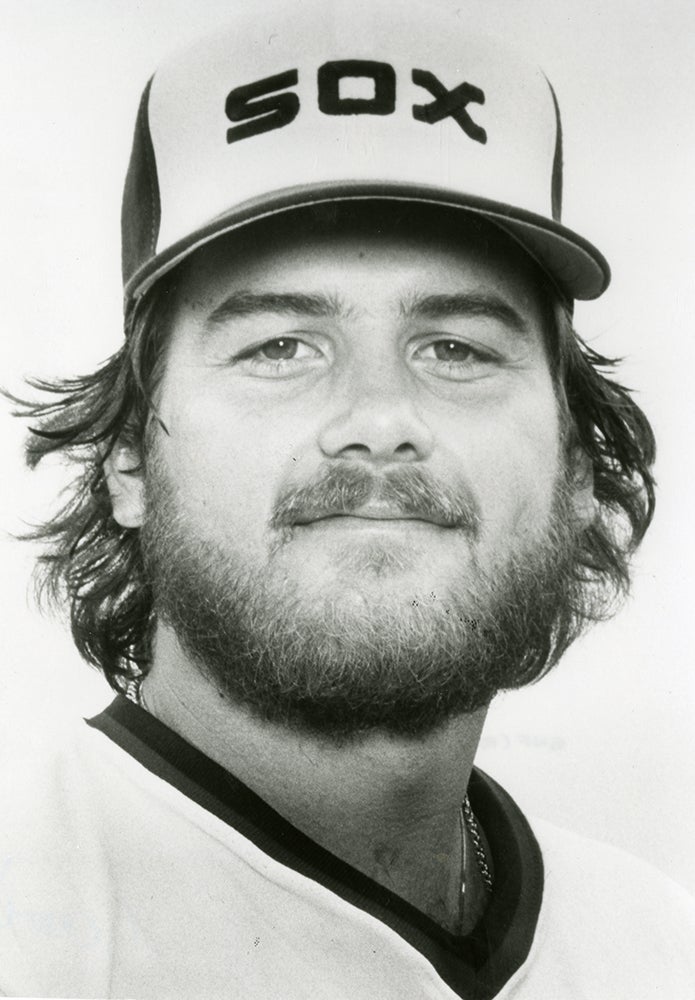
Hoyt signed a one-year deal worth $900,000 during Spring Training of 1984, making him the highest paid pitcher in the American League. But the White Sox and Hoyt fell on hard times that year as Chicago went 74-88 and Hoyt posted a 13-18 mark – with the most losses in the big leagues – to go with a 4.47 ERA. He repeated his 1983 marks, however, as league leader in walks per nine innings and strikeouts per walk ratio.
And his won-loss record did nothing to diminish his trade value. The Padres, fresh off a World Series appearance where their starting pitchers struggled, targeted Hoyt in the offseason and pulled off a blockbuster deal on Dec. 6, 1984, that brought Hoyt and two minor leaguers to San Diego in exchange for Ozzie Guillén, Tim Lollar, Bill Long and Luis Salazar.
“It was obvious in the World Series that we needed a big starter to get us over the hump and help our young pitchers,” Padres general manager Jack McKeon told United Press International. “We have that in LaMarr Hoyt.”
Hoyt soon signed a five-year contract extension worth a reported $5.2 million, a deal that included a bonus of $25,000 if he won the National League Silver Slugger Award for pitchers. Hoyt batted just .063 in 1985 but gave the Padres all they wanted on the mound, going 16-8 with a 3.47 ERA in 210.1 innings.
He famously was named the National League’s starting pitcher in the All-Star Game when Padres manager Dick Williams – who would manage the NL All-Stars – declared before a July 12 game against the Cardinals that whichever pitcher, either Hoyt or Cardinals starter Joaquín Andújar, performed better that night would be named the All-Star Game starter.
Andújar was incensed and quickly declared he would not participate in the All-Star Game under any circumstances. Hoyt allowed just two hits and no walks over seven shutout innings as the Padres won 2-0.
Then in the All-Star Game, Hoyt allowed just one unearned run over three innings and picked up the win in the National League’s 6-1 victory.

The Padres, however, were unable to repeat their postseason appearance from 1984. And following the 1985 season, Hoyt’s career began to spiral out of control.
Hoyt was arrested in February of 1986 for marijuana possession and carrying Valium and Quaaludes, then soon arrested again for marijuana possession and for carrying a switchblade. He pleaded guilty and was placed on probation – then struggled during the 1986 season, going 8-11 with a 5.15 ERA after missing most of Spring Training while taking part in a rehabilitation program.
In late October of 1986, Hoyt was again arrested near the United States/Mexico border for carrying Valium and Quaaludes. This time, Hoyt pleaded guilty to two misdemeanor drug counts and was sentenced to 45 days in a federal prison, five years of probation and a $10,000 fine.
“I’ve let a lot of people down with this situation,” the Associated Press quoted Hoyt as saying. “It’s not something I’m very proud of. I’m very sorry for what I’ve done. I know what I did was wrong.”
The Padres waived Hoyt in January, and a month later Commissioner Peter Ueberroth suspended Hoyt for the 1987 season. But an arbitrator soon reduced the suspension to 60 days, and Hoyt won another arbitration case that ordered the Padres to pay his contract through 1989 after the team attempted to void the deal.
The White Sox gave Hoyt a second chance, signing him to a free agent deal on July 1, 1987, and sending him to the minor leagues.
“Hoyt’s path to regain control of his life and career will not be easy, and the end result will be the sole responsibility of LaMarr Hoyt,” White Sox general manager Larry Himes told Florida Today. “He will report to (Class A) Daytona, and there is no intention on bringing him back (to the big leagues) this season.”
But Hoyt did not throw a pitch in organized ball in 1987, and following the season he was arrested in Columbia, S.C., for possession with intent to distribute cocaine and marijuana. He was sentenced to one year in federal prison, about half of which was served in a halfway house in Columbia.
Hoyt died at age 66 on Nov 29, 2021, leaving his wife of 33 years, Leslie, two sons and four grandchildren.
He finished his eight-year big league career with a 98-68 record and a 3.99 ERA.
“He had average stuff but amazing command and tremendous confidence, and he never showed fear,” La Russa told the AP when Hoyt passed away. “He had this impressive cool where he believed if he made his pitches, he would get hitters out. What a great competitor.”
Craig Muder is the director of communications for the National Baseball Hall of Fame and Museum

